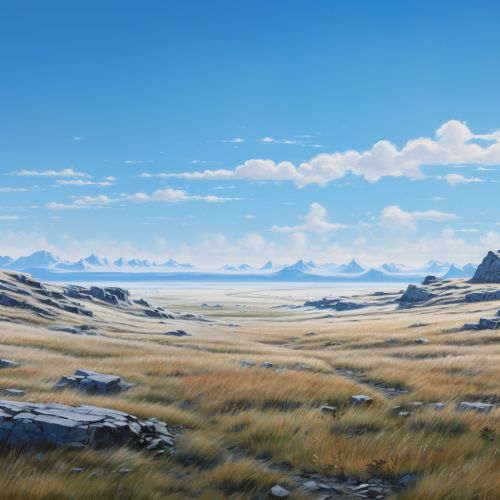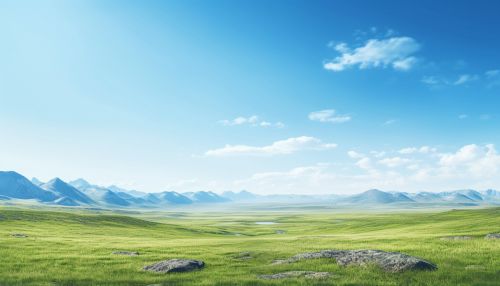Tundra climate
Overview
The tundra climate is a type of biome characterized by its low temperatures and short growing seasons. It is found in the polar regions, at high altitudes in mountains, and in some parts of the northern hemisphere. The word 'tundra' originates from the Finnish word 'tunturi', meaning treeless plain.
Characteristics
Tundra climates are characterized by extremely cold temperatures, with an annual average temperature often below freezing. The winter season can last up to nine months, with temperatures dropping to -40 degrees Celsius or lower. The summer season is brief, typically lasting only 2-3 months, with temperatures rarely exceeding 10 degrees Celsius.


Despite the harsh conditions, tundra climates support a variety of plant and animal life. The vegetation is mainly composed of dwarf shrubs, sedges, grasses, mosses, and lichens. These plants have adapted to the harsh conditions by growing close to the ground and having shallow root systems.
Types of Tundra
There are three main types of tundra: Arctic tundra, Antarctic tundra, and alpine tundra.
Arctic Tundra
The Arctic tundra is found in the northern hemisphere, encircling the North Pole and extending south to the coniferous forests of the taiga. The Arctic tundra is known for its cold, desert-like conditions. The growing season is approximately 50 to 60 days. The average winter temperature is -34°C, but the average summer temperature is 3-12°C, which enables this biome to sustain life.
Antarctic Tundra
The Antarctic tundra is located on the Antarctic peninsula and several Antarctic and subantarctic islands. Unlike the Arctic tundra, the Antarctic tundra lacks a large mammal fauna. Most of the species found here are birds and seals.
Alpine Tundra
The alpine tundra is located on mountains throughout the world at high altitude where trees cannot grow. The growing season is approximately 180 days. The nighttime temperature is usually below freezing. Unlike the Arctic tundra, the soil in the alpine is well drained.
Flora and Fauna
Despite the extreme conditions, a wide variety of plants and animals have adapted to survive in the tundra climate.
Flora
The flora of the tundra includes low-growing plants like dwarf shrubs, grasses, mosses, and lichens. These plants have adapted to the harsh conditions by growing close to the ground and having shallow root systems.
Fauna
The fauna includes large herbivores, such as caribou and musk oxen, and predators like the Arctic fox and the polar bear. A variety of birds migrate to the tundra during the short summer season to take advantage of the abundant insect life and to breed.
Human Impact
Human activities have had significant impacts on the tundra. Climate change, in particular, poses a significant threat to this biome. As global temperatures rise, the permafrost in the tundra is beginning to thaw, releasing large amounts of carbon dioxide and methane into the atmosphere and further contributing to global warming.
